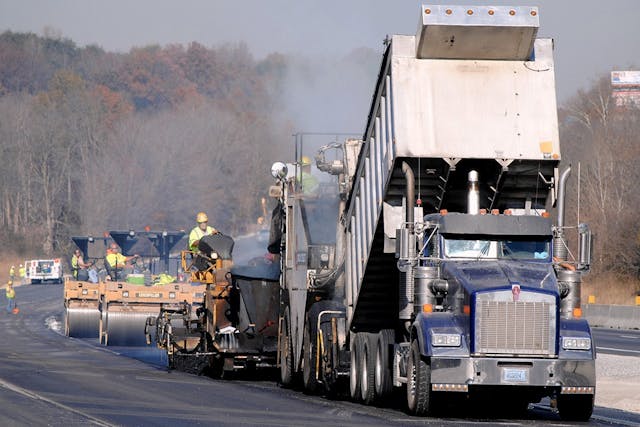Unlocking the Tricks of Hot Mix Asphalt Innovation
Discovering the midsts of warm mix asphalt modern technology uncovers a world where precise formulas and precise procedures assemble to shape our roads and infrastructure. The blend of fillers, accumulations, and binders isn't just a building task yet a tactical orchestration of toughness and efficiency. As we peer into the complex dance of components, a tapestry of resilience and sustainability unravels. What lies beneath this surface of asphaltic proficiency, and what tricks wait to be unveiled in the world of leading innovations?
Importance of Hot Mix Asphalt
Hot Mix Asphalt plays a vital duty in contemporary facilities development due to its toughness and cost-effectiveness. As the most frequently used leading product for roads, highways, and car parking whole lots, Hot Mix Asphalt provides an array of benefits that contribute to its significance in construction projects.
The sturdiness of Hot Mix Asphalt comes from its composition, that includes aggregates, binder, and filler products that are very carefully selected and mixed to fulfill particular performance needs. This exact combination results in a adaptable and strong sidewalk that can endure frequent use without significant wear and tear. Additionally, Hot Mix Asphalt is 100% recyclable, additional improving its sustainability and ecological benefits. Generally, the importance of Hot Mix Asphalt in framework advancement can not be downplayed, as it continues to be a keystone of contemporary building and construction techniques.
Elements of Asphalt Mixes
The structure of asphalt mixes is composed of thoroughly selected accumulations, binder, and filler materials that are crucial for achieving particular performance needs. Accumulations are the primary element of asphalt blends, providing toughness and stability. The binder, generally bitumen or asphalt concrete, holds the aggregates together and supplies adaptability and longevity to the mix.
The mix and proportion of these parts play a considerable role in determining the top quality and performance of the asphalt mix. Engineers very carefully develop the mix to fulfill details demands, considering factors like web traffic quantity, environment conditions, and pavement life expectancy. Appropriate selection and balancing of accumulations, binder, and fillers are essential for creating durable, long-lasting asphalt sidewalks.
Combining and Manufacturing Methods

As soon as the aggregates are selected, the binder, commonly asphalt concrete, is contributed to bind the products with each other. The binder's top quality and amount considerably impact the mix's strength, versatility, and resistance to ecological variables. In addition, fillers like moisturized lime or Rose city cement may be integrated to enhance particular attributes of the asphalt mix, such as its workability or wetness resistance.
During production, the accumulations and binder are warmed, commonly in between 250-325 ° F(121-163 ° C ), to assist in mixing and guarantee proper layer of the accumulations. The blending process must be thorough to attain an uniform blend that page promotes the wanted efficiency qualities of the asphalt. Various strategies, such as set mixing or drum blending, are utilized to achieve regular and top notch asphalt blends for building and construction tasks.
Factors Affecting Asphalt Performance
Aspects affecting asphalt performance include an array of variables that impact the toughness, longevity, and general high quality of asphalt pavements. One crucial variable is the quality of materials made use of in the asphalt mix.

Style factors to consider, such as sidewalk density and drainage, are vital in making certain the long-term performance of the asphalt pavement. By thoroughly thinking about these aspects, service providers and designers can optimize asphalt performance and enhance the service life of pavements.
Lasting Practices in Asphalt Modern Technology

WMA allows for the manufacturing and positioning of asphalt mixes at reduced temperatures contrasted to traditional hot-mix asphalt, resulting in minimized power usage and greenhouse gas exhausts. The use of permeable asphalt blends can help alleviate stormwater runoff problems by allowing water to penetrate via the pavement and into the ground, advertising natural water filtering and reenergize processes.
Final Thought
In conclusion, hot mix asphalt innovation plays a vital duty in modern infrastructure development because of its toughness and cost-effectiveness. By carefully balancing components, employing proper mixing techniques, and thinking about different elements, engineers can create premium asphalt blends that stand up to hefty web traffic tons and extreme weather. Accepting sustainable practices, such as using warm-mix modern technologies and recycled products, further boosts the environmental friendliness of asphalt technology.
Mixing and production strategies in warm mix asphalt technology include the exact mix and handling of accumulations, binder, and fillers to develop a resilient and high-performance asphalt mix.Factors affecting asphalt efficiency encompass a range of variables that influence the toughness, durability, and overall top quality of asphalt pavements. Sustainable practices in asphalt technology incorporate various initiatives intended at lowering the environmental influence of asphalt manufacturing and paving procedures. By incorporating redeemed asphalt pavement (RAP) and recycled asphalt shingles (RAS) right into new asphalt mixes, the sector can click over here significantly reduce the intake of raw materials and power, while also lowering landfill waste.
WMA permits for the production and positioning of asphalt mixes at reduced temperature levels compared to typical hot-mix asphalt, resulting in decreased power consumption and greenhouse gas exhausts.